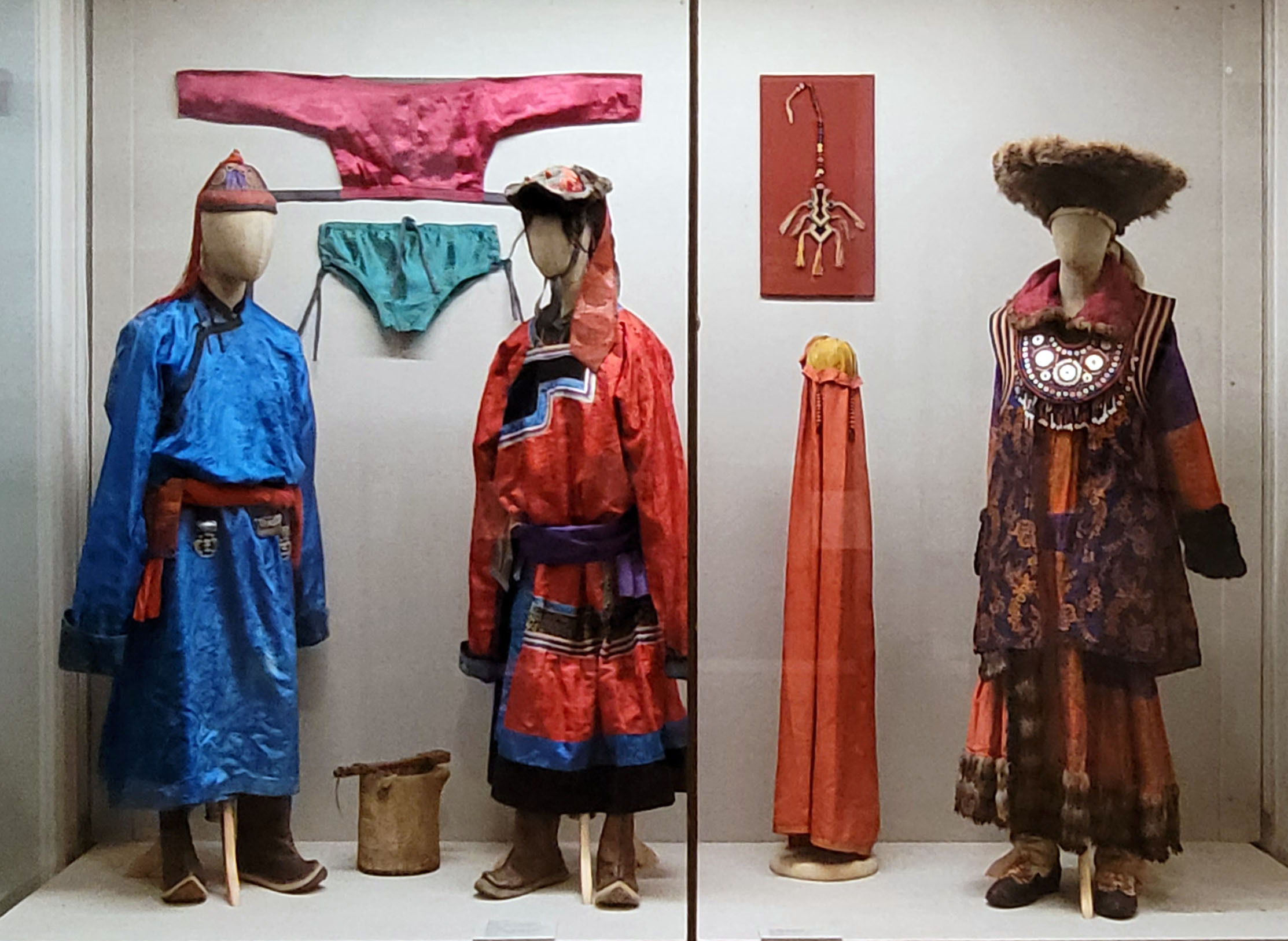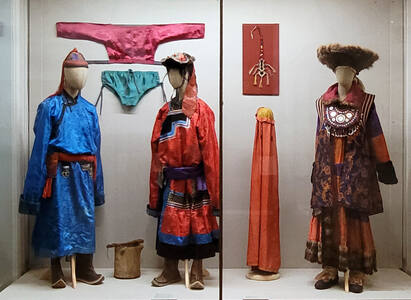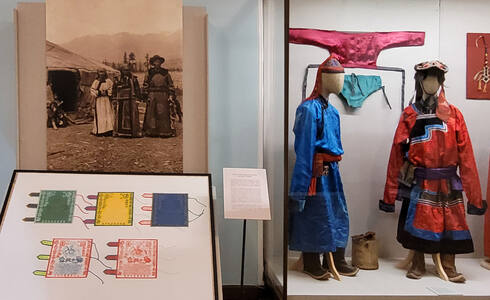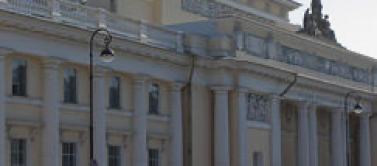Silk in the Religious Practices of the Peoples of Siberia

In China and other territories within its sphere of influence (Japan, Korea, Tibet, Mongolia, Buryatia, the Sayan-Altai Region), and Kalmykia, in addition to everyday purposes, silk threads, cords, fabrics, and brocade were used for elements of the Buddhist priest garbs, as well as decorations for temple interiors and various religious objects, which proves the high, perfected aesthetics and prestigious status of the material. For stunning Buddhist images created with mineral paints on a primed canvas, the frame was traditionally made of silk; sometimes silk was the basis. Silk and brocade fabrics of various colors and textures and silk threads were also used for appliqué and embroidered Buddhist images. In South Central Siberia, those were part of various pre-Buddhist and syncretic religious practices. This is also true for khatas, small pieces of silk in primary Buddhist colors (white, yellow, blue, green, and red), which were used not only in Buddhist practices but also for ritual gift exchange (any prestigious gift is still supposed to be presented on a khata), as well as in worship rituals for various spirits. Even now, when traveling across Mongolia, Buryatia, or the Sayan-Altai Region, at numerous obo or ovoo places of worship, as well as in modern Buddhist temples and Buddhist suburgan stupas, you can see mass offerings in the form of tied khatas.
Set of prayer flags in five Buddhist primary colors
Kyzyl, Republic of Tuva. 2011. Tuvans
Wrestler’s costume
Tuvan Autonomous SSR. 2nd half of the 20th century. Tuvans
Men’s festive attire
Uryankhay Territory, Chinese Empire. Late 19th – early 20th century. Tuvans
Pail and spoon for the aspersion ritual
Tuvan Autonomous SSR. Mid-20th century. Tuvans
Women’s festive attire
Uryankhay Territory, Chinese Empire. Late 19th – early 20th century. Tuvans
Tumalay bride’s wedding cover
Uryankhay Territory, Chinese Empire. Late 19th century. Tuvans
Svatya’s festive attire
Minusinsk County, Yeniseysk Governorate. Late 19th – early 20th century. Khakas
Pincushion
Minusinsk County, Yeniseysk Governorate. Late 19th – early 20th century. Khakas




